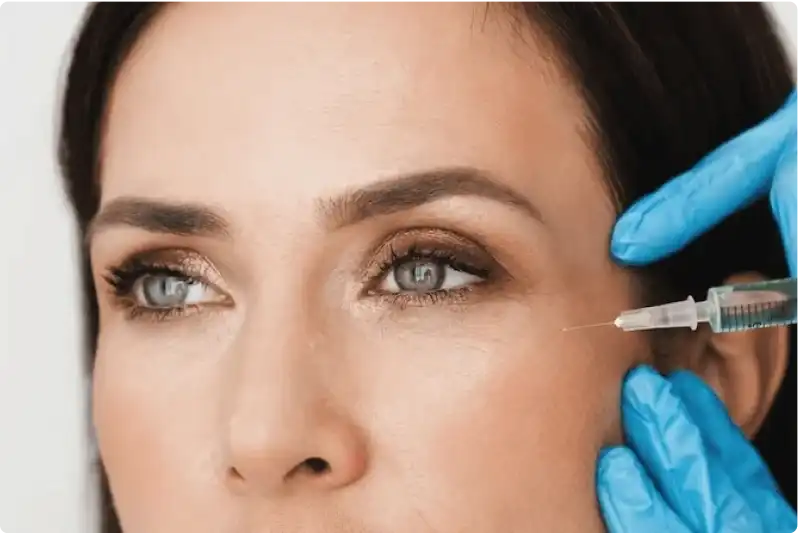Only for Licensed Professionals
Only for Licensed Professionals

Tobradex for Pink Eye – Is It Effective?
Nina Petrovic
Last Updated On: September 1, 2025
Conjunctivitis, often referred to as pink eye, is one of the most common eye conditions people experience. In the United States alone, the CDC estimates that there are approximately 3 million cases of bacterial conjunctivitis each year. While many cases clear on their own or with simple treatment, others may require prescription medication to ease symptoms, prevent complications, and reduce the spread of infection.
One treatment sometimes considered in these cases is Tobradex, a prescription eye medication that combines an antibiotic (tobramycin) with a corticosteroid (dexamethasone). This dual-action formula works to fight bacteria while also calming inflammation—a combination that can be useful when conjunctivitis is accompanied by significant swelling, redness, or discomfort.
In this article, we’ll take a closer look at Tobradex for pink eye, examining how it works, its effectiveness, and the situations in which specialists may recommend it.
Key Takeaways
- Pink eye (conjunctivitis) can be bacterial, viral, or allergic, and treatment depends on the cause.
- Tobradex combines tobramycin (antibiotic) and dexamethasone (corticosteroid), making it useful in bacterial conjunctivitis cases with significant inflammation.
- It is not effective for viral or allergic pink eye, and inappropriate use can increase risks such as delayed healing, glaucoma, cataracts, or antibiotic resistance.
- Proper diagnosis by an eye care professional is essential before starting Tobradex, since misuse can do more harm than good.
- Patients should follow dosing carefully, avoid self-medicating, and attend follow-up visits to ensure safe and effective treatment.
About: Operating since 2016, Med Supply Solutions is known for being one of the industry’s top and trusted suppliers of cosmetic and viscosupplementation products. If you’re looking to buy Tobradex online, contact our sales department for more information.

Understanding Pink Eye: Types and Causes

Conjunctivitis, more commonly known as pink eye, occurs when the thin, clear tissue covering the white part of the eye and inner eyelids becomes inflamed. It affects people of all ages and often brings symptoms like redness, irritation, and eye discharge. While usually not dangerous, identifying the exact cause of pink eye is key to finding the right treatment.
There are three main types:
- Bacterial Conjunctivitis: Caused by bacteria such as Staphylococcus aureus, Streptococcus pneumoniae, or Haemophilus influenzae. It often produces thick yellow, green, or white discharge that can crust around the eyelashes, especially overnight. It may involve one or both eyes and spreads easily without proper hygiene.
- Viral Conjunctivitis: Linked to viral infections like the common cold or flu. Symptoms often include watery discharge, burning, or a gritty sensation. It usually begins in one eye and spreads to the other, lasting one to two weeks. Like bacterial conjunctivitis, it is very contagious.
- Allergic Conjunctivitis: Triggered by allergens such as pollen, dust, pet dander, or mold. Unlike bacterial or viral forms, it is not contagious. Instead, patients often experience intense itching, redness, tearing, and swelling in both eyes. It frequently follows seasonal patterns when allergens are more concentrated.
Recognizing the type of conjunctivitis matters because treatments differ. Antibiotics only help in bacterial cases, while viral infections improve with time and supportive care. Allergic conjunctivitis responds best to antihistamines or avoiding the allergen. Understanding the cause ensures treatment is effective and avoids unnecessary medications.
Efficacy of Tobradex in Treating Bacterial Conjunctivitis

Tobradex combines two agents: tobramycin, an antibiotic, and dexamethasone, a corticosteroid. This pairing is valuable in select cases of bacterial conjunctivitis where inflammation is more than mild. By addressing both bacteria and inflammation, Tobradex can help improve comfort and reduce swelling, though its use is usually reserved for moderate to severe cases under specialist supervision.
When prescribed appropriately, Tobradex may:
- Target harmful bacteria such as Staphylococcus aureus, Streptococcus pneumoniae, and Haemophilus influenzae, limiting infection and easing symptoms.
- Reduce inflammation through dexamethasone, helping calm redness, swelling, and irritation that accompany infection.
- Improve overall comfort by relieving the burning, itching, and general eye discomfort often seen in bacterial pink eye.
It is essential to note that while Tobradex can be effective when used in the correct setting, it does not guarantee a faster recovery in every case. Its benefit lies in treating both infection and inflammation simultaneously, which can improve the quality of life during healing.
Patients interested in learning more often ask what Tobradex is used for, and in this context, it is most commonly considered for bacterial pink eye with significant inflammation.
Risks of Using Tobradex for Viral or Allergic Pink Eye
Although Tobradex can play a crucial role in bacterial conjunctivitis, it should not be used for viral or allergic conjunctivitis. Since these conditions have different causes, the antibiotic component is ineffective, and the steroid may even create unwanted risks.
Potential Risks
- In viral conjunctivitis, antibiotics have no effect, and steroids may suppress natural immune defenses, effectively prolonging recovery.
- With unnecessary steroid use, eye pressure may rise, which over time can contribute to glaucoma or cataracts.
- The steroid may temporarily reduce redness and swelling, masking symptoms and delaying accurate diagnosis.
- Overuse of antibiotics when no bacteria are present can lead to the development of antibiotic resistance, making future infections more difficult to treat.
For these reasons, Tobradex should only be prescribed when bacterial conjunctivitis with marked inflammation is confirmed. Using it outside of these conditions risks more harm than benefit.
Best Practices for Diagnosing and Prescribing Tobradex for Pink Eye
Because pink eye can stem from different causes, a careful diagnosis is the foundation of safe treatment. Healthcare providers examine a patient’s history, symptoms, and sometimes laboratory tests to determine whether bacteria are involved. This step is crucial; misusing Tobradex for viral or allergic cases can delay recovery and worsen symptoms.
Once bacterial conjunctivitis with inflammation is confirmed, Tobradex may be prescribed under strict medical supervision. Best practices include:
- Following dosage exactly as prescribed—never increasing, decreasing, or skipping doses.
- Avoiding self-medication with leftover prescriptions or sharing drops, which can spread infection.
- Attending follow-up appointments so the doctor can monitor eye pressure and ensure the infection is improving.
- Reporting any worsening or persistent symptoms immediately, as this may point to resistance or an incorrect diagnosis.
These steps protect patients from complications while maximizing the benefit of treatment. Proper diagnosis, adherence, and monitoring are what make Tobradex safe and effective when used for bacterial pink eye.
Conclusion
Tobradex can be a valuable option in managing bacterial conjunctivitis when significant inflammation is also present. Its combination of an antibiotic and a corticosteroid helps tackle both infection and discomfort, though it is not suitable for viral or allergic forms of pink eye.
Because safety depends on correct use, patients should never self-prescribe or use leftover medication. Instead, they should seek medical evaluation, follow instructions carefully, and attend follow-up visits. Used responsibly, Tobradex can provide meaningful relief and protection for patients with bacterial pink eye, helping restore comfort and eye health.
FAQs
1. Can I buy Tobradex over the counter for pink eye?
No. In the U.S. and most countries, Tobradex is prescription-only. Regulations may differ elsewhere, but medical guidance is always recommended.
2. How quickly does Tobradex work for bacterial pink eye?
Many patients feel some relief within the first couple of days, though the full course of treatment must be completed. Recovery time varies based on the infection and patient health.
3. Can Tobradex worsen pink eye?
Yes. If used for viral or allergic conjunctivitis, Tobradex can mask symptoms, delay healing, or increase risks like high eye pressure.
4. Is Tobradex safe for children with pink eye?
It may be prescribed to children, but only under the care of a pediatric ophthalmologist. Dosing and monitoring are especially important in younger patients.
References
Centers for Disease Control and Prevention. Conjunctivitis (Pink Eye). Updated July 18, 2023. Accessed August 29, 2025. https://www.cdc.gov/conjunctivitis/index.html
Kaur G, Seitzman GD, Lietman TM, et al. Keeping an eye on pink eye: a global conjunctivitis outbreak expert survey. Int Health. 2022;14(5):542–544.
Products
Cart
Log In
Newsletter
Subscribe for exclusive offers and updates on new arrivals
Share feedback at:
Working Hours
MON - SUN 9AM to 6PM EST
The Most Popular Brands
Med Supply Solutions
Support
Secure checkout is guaranteed with full adherence to PCI DSS payment standards.
Products listed here are guaranteed authentic and manufacturer-sourced.
Pay easily with trusted providers


*Google and Apple Pay are currently only available via a direct link provided by your account manager.
Copyright 2025. Med Supply Solutions